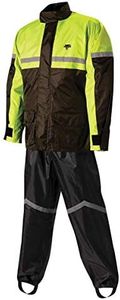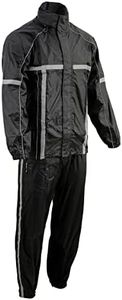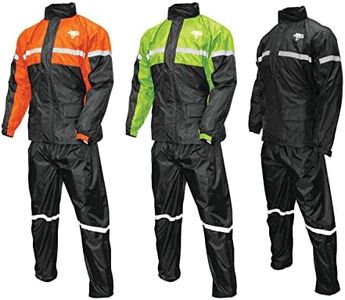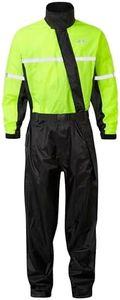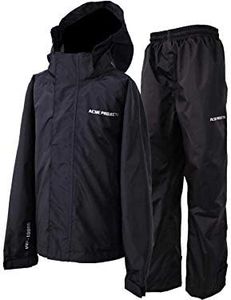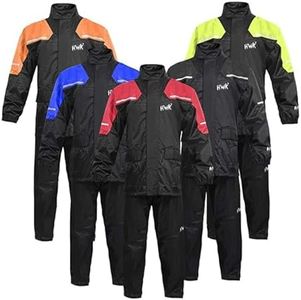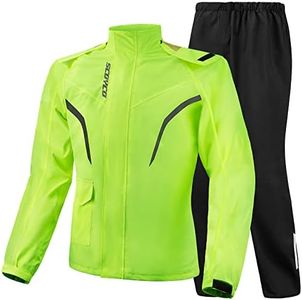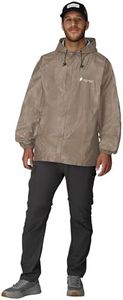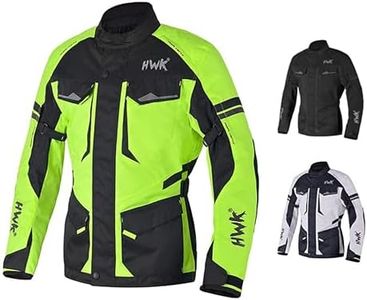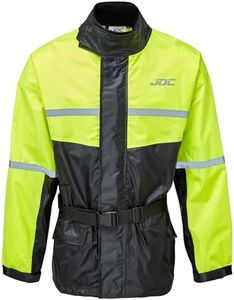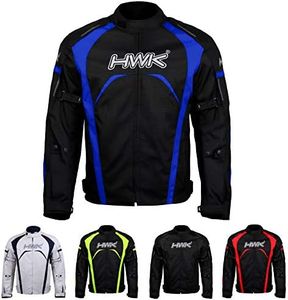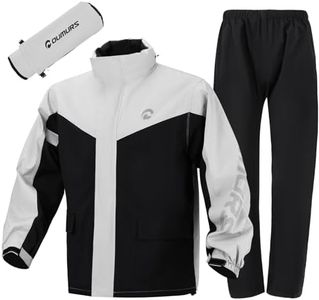We Use CookiesWe use cookies to enhance the security, performance,
functionality and for analytical and promotional activities. By continuing to browse this site you
are agreeing to our privacy policy
10 Best Motorcycle Rain Gears
From leading brands and best sellers available on the web.Buying Guide for the Best Motorcycle Rain Gears
Choosing the right motorcycle rain gear can make a huge difference in your riding comfort and safety when the weather turns wet. Rain gear is designed to keep you dry, warm, and protected, so you can enjoy your ride without being distracted or at risk from cold, slippery conditions. To select the best rain gear for you, it’s important to consider key features that impact waterproofing, comfort, and practicality. Your riding style, typical weather conditions, and how much you value convenience or durability will all play a role in finding the gear that fits your needs best.Waterproofing MaterialThe material used in rain gear determines how well it can keep water out. This specification refers to the kind of fabric and coatings applied, such as PVC, nylon, or laminate technology. Some materials give absolute waterproof protection, while others balance water resistance with breathability. Lightweight plastics and vinyl shield well from rain but can trap heat and sweat, while more advanced fabrics let some moisture escape to keep you comfortable. If you ride in light, occasional showers, basic waterproofing may suffice. For frequent or heavy rain riders, aim for gear that features both strong waterproof layers and some breathability to avoid getting damp from your own perspiration.
BreathabilityBreathability is about how well the fabric lets heat and sweat escape, preventing you from feeling clammy inside your rain gear. Gear with no ventilation can cause you to get wet from your own sweat, especially on warm, rainy days. Breathability is rated and described with terms like vents, mesh linings, or special membranes. Minimal breathability may be okay for short rides or cooler climates, but for long journeys or humid weather, it's worth picking gear with extra ventilation or breathable fabrics, so you stay comfortable as well as dry.
Fit and AdjustabilityThe way rain gear fits your body impacts comfort and effectiveness. This spec involves how adjustable the gear is at areas like the waist, wrists, and ankles to seal out water. It also includes how much room the gear allows for wearing over your regular riding clothes. Loose-fitting gear is easier to put on quickly and fits over bulky jackets or armor, but overly baggy items can flap in the wind. Snug, adjustable fits help prevent water from seeping in. Consider your usual riding clothing and look for rain gear with adjustable straps or elastic closures that let you create a secure, personalized fit.
Visibility and Reflective ElementsVisibility refers to how easily others on the road can see you in poor weather. Rain can reduce visibility dramatically, so rain gear often includes bright colors or reflective strips to keep you more visible to drivers. If you often ride in low-light or high-traffic situations, reflective gear helps boost your safety. If you usually ride during the day and in lower-traffic areas, you might prioritize other features, but a minimum level of reflectivity is always a wise choice for any motorcyclist.
Ease of Packing and PortabilitySince rain gear is often carried as a precaution, how easily you can fold and store it matters. Portability describes how compact the gear is when not in use, and how much space it takes up in your luggage or under your seat. Some rain gear can be stuffed into small bags, while bulkier options might be tougher to store. For riders who want to be prepared for sudden showers but need to save space, lightweight, easily-packable rain gear is best. If you ride longer distances and expect rain more often, you may choose sturdier, slightly bulkier gear and make space for it in your packs.
Durability and ReinforcementDurability is about how well rain gear stands up to repeated use and exposure to the elements, including tears, abrasion, and general wear. Some rain gear has reinforced areas, like elbows and knees, for extra strength in areas that see the most movement or risk. If you use rain gear only occasionally, basic options could suffice, but for frequent riders or those going on longer trips, it pays to select gear that mentions reinforced seams, double-stitched panels, or extra-strong materials to ensure it lasts through many rides.
